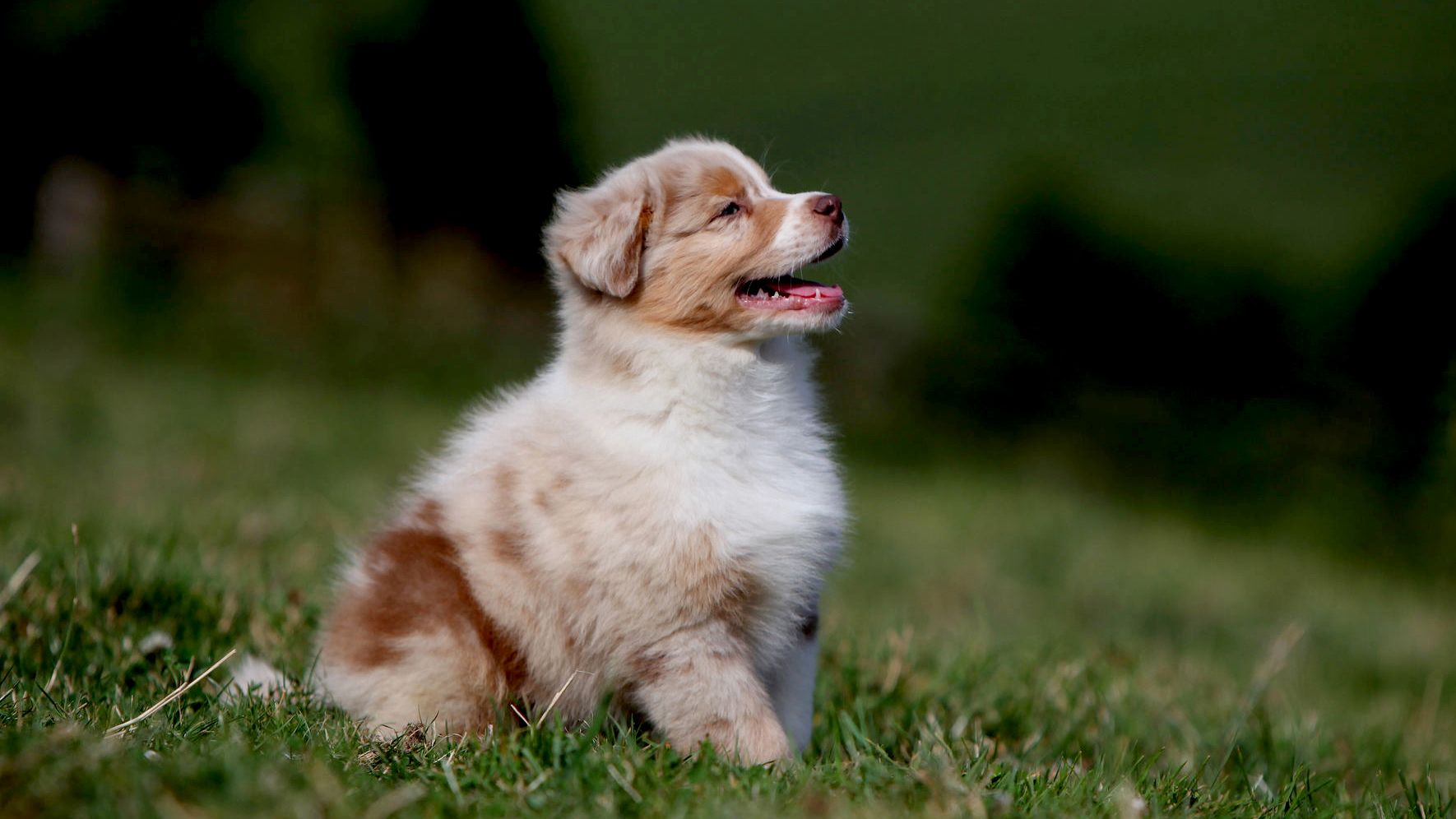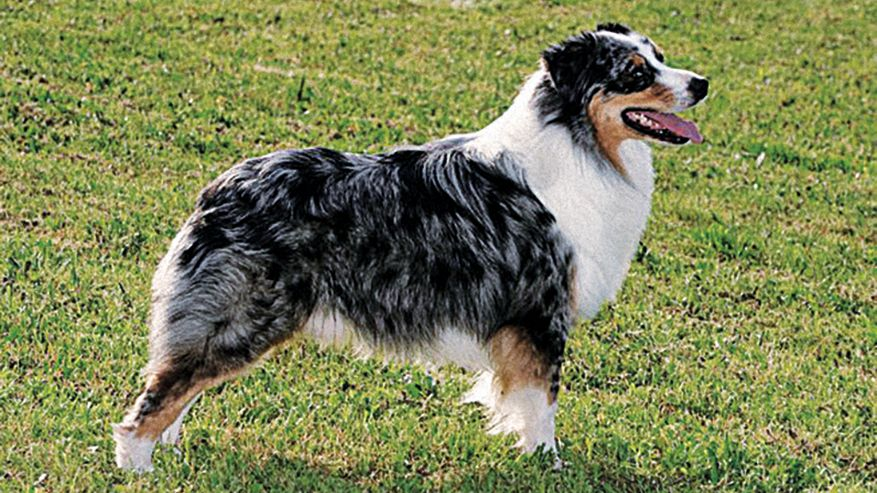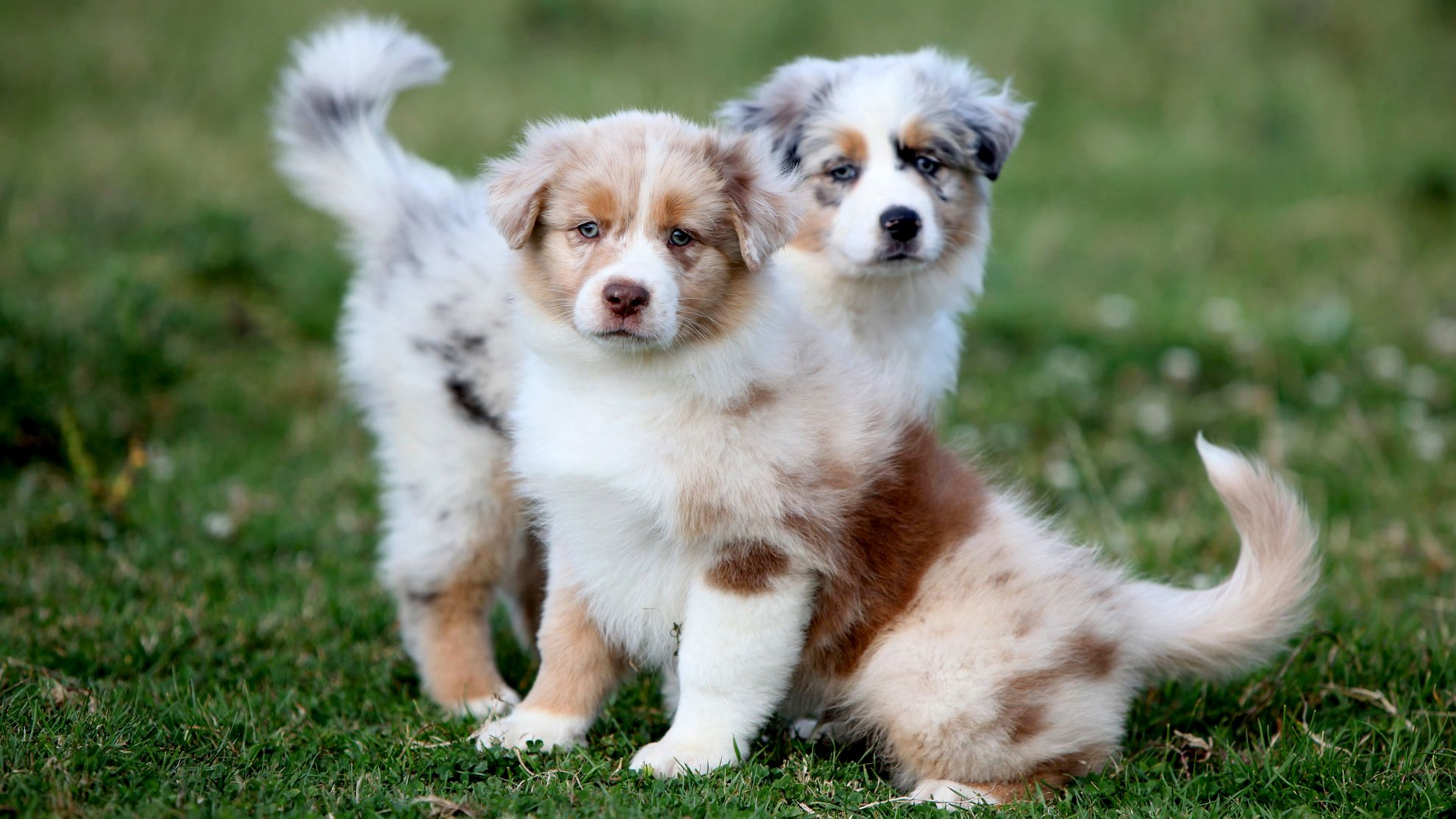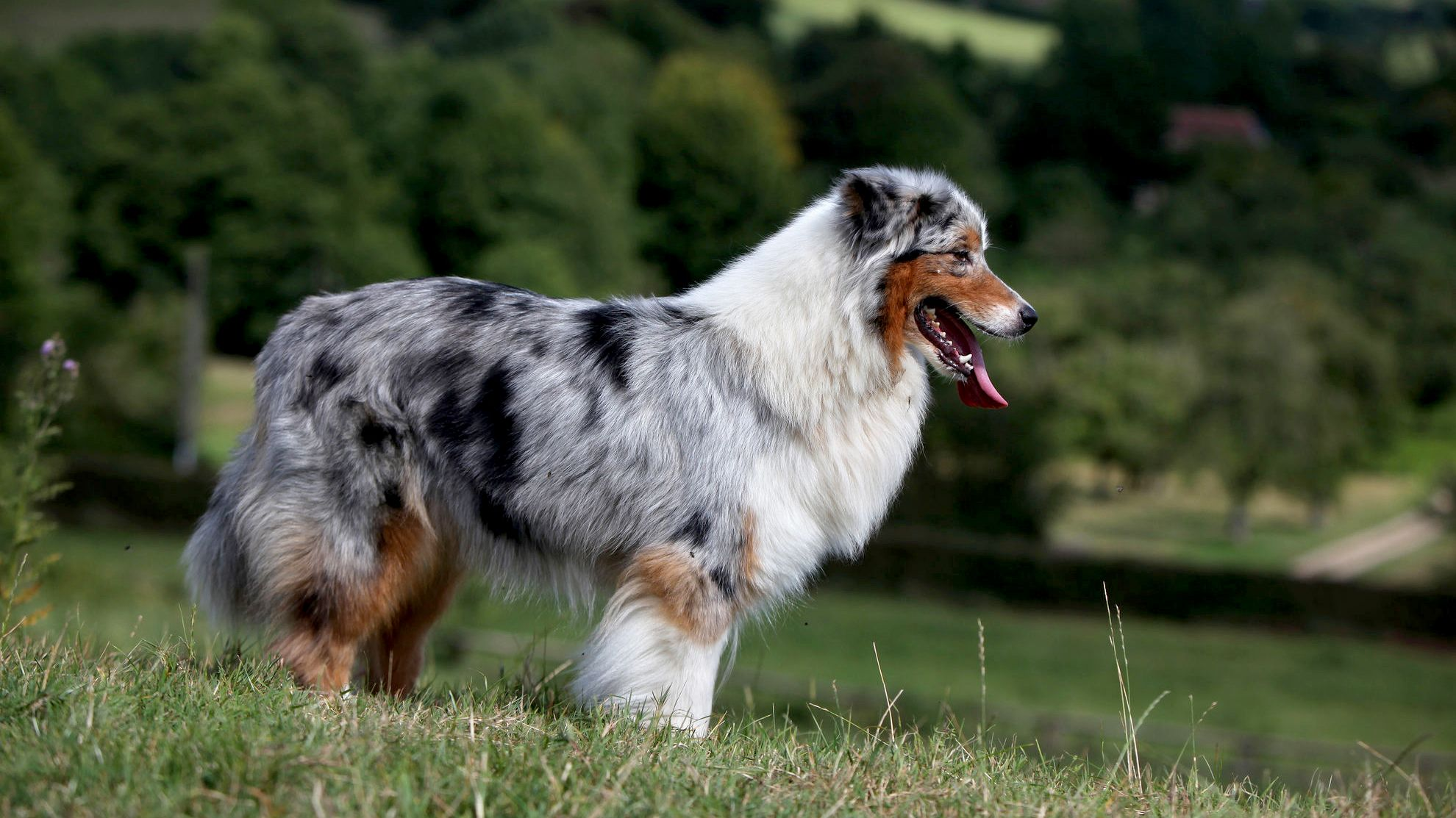Let's talk Australian Shepherds
Believe it or not, the Australian Shepherd is an American original, despite being named for Down Under. Their solid sense of self and endless energy was discovered by cattle ranchers in the western U.S. after the dog was brought there by Basque settlers via Australia. There are no borders for this beloved breed. Agile and always up for work, the Australian Shepherd has an even-keeled temperament that makes them a fabulous addition to any personal or professional abode.
Official name: Australian Shepherd
Origins: United States of America
Drooling tendencies
1 out of 5Shedding Level
3 out of 5Energy level*
5 out of 5Compatibility with other pets
4 out of 5Warm weather?
4 out of 5Suited to apartment living
1 out of 5Family pet?*
5 out of 5Can be left alone
2 out of 5
| Male | Female |
|---|---|
| Height | Height |
| 20 - 23 in | 18 - 21 in |
| Weight | Weight |
| 50 - 65 lb | 40 - 55 lb |
| Life stages | |
|---|---|
| Puppy | Adult |
| Birth to 12 months | 1 to 7 years |
| Mature | Senior |
| 7 to 10 years | From 10 years |
Tailored nutrition for Australian Shepherds

Get to know the Australian Shepherd
All you need to know about the breed
Three words best describe the Australian Shepherd: Extremely high energy. The breed is a delight, in appearance and in disposition. If your home has wide open fields or a large yard, you will have the pleasure of watching this breed blossom from puppyhood into a wonderful, active dog.
Know too that soon enough, the natural instincts of your Australian Shepherd will kick in. That means a need to herd, and if you don’t own sheep, it will be children, other pets, even you. Your Aussie means no harm: It’s merely his way of keeping everyone organised and carrying out their genetically ingrained duties. This is a taskmaster of a dog, most content when at work.
That said, make sure that exercise for your Australian Shepherd is daily and almost constant, whether he resides in the suburbs or the country. The breed is a superb family pet, a medium-sized dog with a bright face and tireless energy level. An equally active owner is best - marathoners welcome! Because of their deep roots in herding and ranch work, the Australian Shepherd is a staple in the American sport of rodeo. They excel at agility or obedience trials as well. Training for the Australian Shepherd is a cinch but strong discipline is key. Their incredible smarts are an asset on the job but they can be wiley if they want to. With an affinity for their owners, teaching your Australian Shepherd should be an enjoyable task in the end.

Two facts about Australian Shepherds
1. They. Must. Herd.
It cannot be overstated enough: this is a breed with an innate need to round things up. The Australian Shepherd dog has been highly bred over the years to work with livestock, so has developed a genetic desire to gather those in their midst - including children and other pets. As gentle dogs who are just doing their job, know they’ll comply with your wishes when they need to.
2. Lending a helping bark
Like all dogs, the Australian Shepherd barks but perhaps at times more than the average canine. It is, however, out of a sense of caring: The breed is a herding one from way back and feels the need to protect, sometimes fiercely, thus will “alert bark” if they perceive a threat in any way. With this kind of instinct, the Australian Shepherd makes a great family pet, for sure.
History of the breed
A truly international pedigree, the Australian Shepherd has benefitted from being bred in one country, named for another, and treasured in a third. The Australian Shepherd’s lineage spans several centuries, starting with their descent from herding breeds, namely Pyrenean Shepherds from the Basque region between France and Spain.
As wanderlust struck for the Basque people in the 1800s, they ventured to the faraway land and new continent of Australia. Sheep herding there necessitated a keen canine; the Australian Shepherd’s high intelligence fit perfectly. They were soon crossed with the Collie to sharpen the breed. Ever on the move, the Basques set out for new territory in California where the breed was embraced by cattle ranchers and named the Australian Shepherd after their supposed land of origin. The dog is now commonly seen on ranches, in rodeo, and used for search-and-rescue. The American Kennel Club recognized the breed in 1993.
From head to tail
Physical characteristics of Australian Shepherds
1.Ears
2.Head
3.Body
4.Tail
5.Coat

Things to look out for
From specific breed traits to a general health overview, here are some interesting facts about your Australian Shepherd
Out and about
As a working breed found out in the fields, the Australian Shepherd is exposed to factors beyond their control. As outdoor dogs, they need to be kept hydrated. They can also easily pick up parasites often called worms, whether indoors or out. Your veterinarian will examine your dog for the presence of parasites and will provide the most appropriate recommendation for preventive care. To know, some deworming medications to treat parasites can be very harmful to the Australian Shepherd in particular. The breed carries a gene which makes them hypersensitive to some treatments. Testing can be done to find out if your dog is a carrier.
Keep a watchful eye
The Australian Shepherd breed is known literally, for being bright-eyed and bushy-tailed, but ironically, it’s those bright eyes that can at times be prone to certain eye defects, called in the dog world Inherited canine eye diseases. There are a few diseases that can sometimes occur, such as progressive retinal atrophy, Collie Eye Anomaly, and juvenile cataracts. Have your veterinarian run regular tests during your yearly checkups to keep your Australian Shepherd dog looking healthy.
Tailored nutrition for Australian Shepherds

When choosing food for an Australian Shepherd, there are many factors to consider: Their age, lifestyle, activity level, physiological condition, and health including potential sickness or sensitivities. Food provides energy to cover a dog’s vital functions, and a complete nutritional formula should contain an adjusted balance of nutrients to avoid any deficiency or excess in their diet, both of which could have adverse effects on the dog.
Strong Immune System
Supports the development of the puppy's healthy immune system with the inclusion of clinically proven antioxidants, including vitamins E and C.
Brain Development
Enriched with DHA, an omega-3 fatty acid that is scientifically proven to support the puppy's brain development.
Microbiome Support
Combination of prebiotics & highly digestible proteins to help promote a healthy balance of intestinal bacteria for digestive health.

The main nutritional goals for adult Australian Shepherds are:
Body Condition
Helps maintain ideal weight and muscle mass with optimal levels of protein.
Healthy Digestion
Easy-to-digest proteins, vitamins & minerals, and a blend of fibers for optimal nutrient absorption.
Healthy Immune System
Clinically proven antioxidants (vitamins C and E) and prebiotics for a healthy gut and immune system.

After 7 years old, Australian Shepherds start facing the first signs of aging. A formula enriched with antioxidants will help maintain their vitality, and specific nutrients, such as chondroitin and glucosamine, will help maintain healthy bones and joints. Aging can also be accompanied by the modification of digestive capacities and particular nutritional requirements, so food for older Australian Shepherds should have the following characteristics:
Body Condition
Helps maintain ideal weight and muscle mass with optimal levels of protein.
Vitality Support
Supports heart, kidney and brain health in first stage of aging.
Healthy Immune System
Clinically proven antioxidants (vitamins C and E) and prebiotics for a healthy gut and immune system.

Caring for your Australian Shepherd
Exercise, grooming and training
7/7
All about Australian Shepherds
In a word, yes. As a family dog, the Australian Shepherd is top notch. They are very even-tempered, content among their humans, and always looking for something to do - which, as a herding breed, could include herding children and other pets! It’s something they do only to be helpful. A better domestic match would be hard to find!
The Australian Shepherd personality is upbeat and gregarious - and energetic. But when they’re not bounding through the fields, the breed is indeed very glad to cuddle up - preferably to a family member as they don’t always take to people they don’t know. Some Australian Shepherds are more cuddly than others, that independent streak kicking in more or less depending on the dog.
Suggested Breeds
Read more on this topic
Sources
- Veterinary Centers of America https://vcahospitals.com/;
- Royal Canin Dog Encyclopaedia. Ed 2010 and 2020
- Banfield Pet Hospital https://www.banfield.com/
- Royal Canin BHN Product Book
- American Kennel Club https://www.akc.org/
Like & share this page